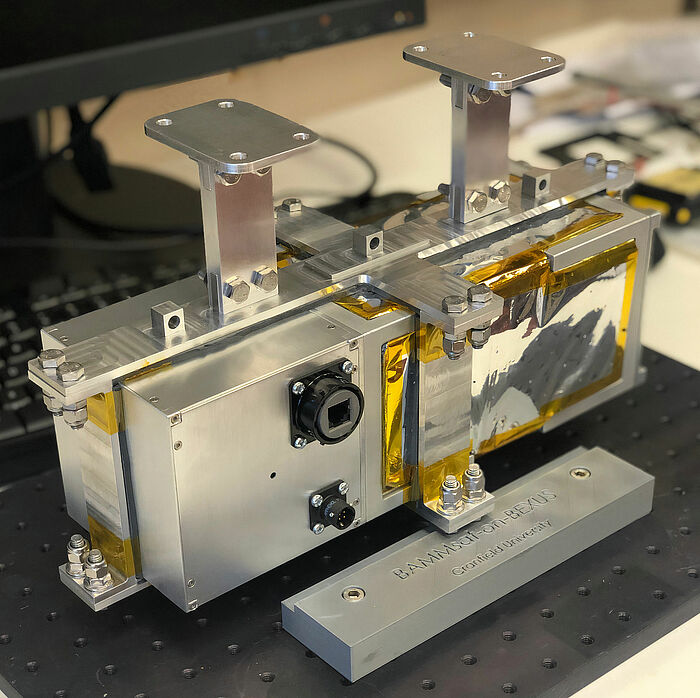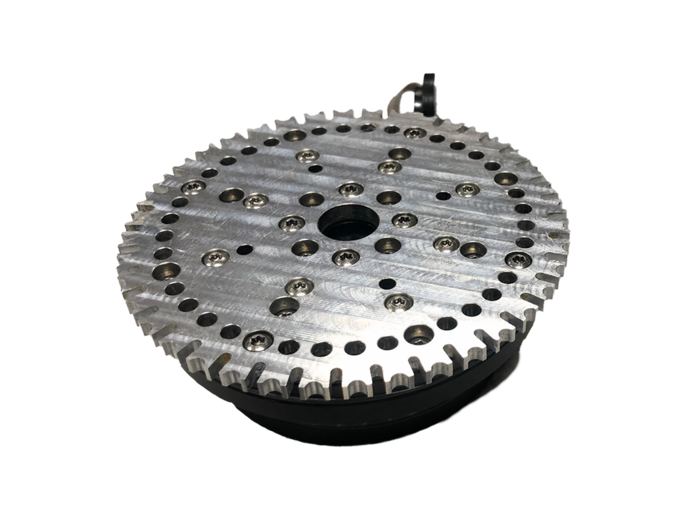The moon, which is soon to be revisited by several space-faring nations, is a mere stone's throw away. Even with the technology of the 1960s and 1970s, the journey to the earth's satellite took just three days. However, the next major destination for manned space flight is Mars. A spacecraft needs nine months to reach our neighboring planet – the roundtrip would therefore take one and a half years. During this time, the crew would be exposed to zero gravity and the high levels of radiation encountered in space. What effect such long-term conditions have is nowhere near fully researched.
"The impact of zero gravity and exposure to cosmic radiation can only be partially investigated here on earth," says Aqeel Shamsul who supervises the BAMMsat project at the Cranfield University, England. "Experiments in space pose particular challenges and require rather expensive rocket transport, astronaut time, and logistics. This in turn restricts the possibilities for research on biological systems under space conditions."
CubeSats – The low-cost aerospace segment
A number of years ago, his student working group set itself the goal of finding a practical and low-cost solution to this dilemma. The idea was to develop an automated miniature laboratory that can autonomously conduct a variety of experiments on microbial cultures and simple higher organisms. The dimensions were predefined: The test setup had to fit inside a "3U CubeSat".
CubeSats – or cuboid satellites – have been used since 2004. They are standardized cuboid modules for small-scale satellites with a low launch weight and correspondingly low launch costs. They heralded the beginning of a kind of low-cost aerospace segment. The smallest CubeSat has the designation 1U (one unit). It measures around 11×10×10 centimeters and weighs a maximum of 1.33 kilograms. A 3U CubeSat measures 34×10×10 centimeters and weights four kilos. Several CubeSats, also satellites of different sizes, can be launched together on a rocket and the transport costs shared.
A nematode as test pilot
The minilab of the BAMMsat team fits inside a 3U casing, which is roughly the same size as a shoe box for a pair of flat ballet pumps. The experiments are conducted on specimens of Caenorhabditis elegans. This is a nematode which measures just one millimeter in length and normally lives in soil in temperate climatic zones. 83 percent of its genes are comparable with human genes, which is why it is frequently used on earth for studies in areas such as gerontology, muscle physiology and radiobiology. In space, the cells of C. elegans react to zero gravity and exposure to radiation in a similar way to human cells.
A key element of the miniature space laboratory is a round disk with several chambers in which the biological specimens are kept. The chambers have inlet and outlet openings through which minute quantities of fluid can be fed in or withdrawn. This allows the nematodes to be supplied with food and their excretions to be removed. Furthermore, various pharmaceutical substances are also fed in to study their effect under space conditions.
By rotating the disk, the chambers can be moved in front of a microscope lens. A spectrometer can determine biochemical properties of the material inside the chamber, such as the proportion of proteins. In this way, it is possible to perform many different experiments in the same system – a novelty for such instruments. Instead of nematodes, the chambers could also contain microbial cultures, for example. The data from the experiments is collected by the on-board computer and sent to earth.
Torque for the rotating disk
"One of the most important aspects of this projects was to keep weight to a minimum," explains Aqeel Shamsul. "This allowed us to fit the module inside the 3U CubeSat and ensure the project's economical feasibility. A key element here was the drive for the specimen disk. It not only has to be extremely small and light, but also has to deliver a high torque and operate extremely precisely during the entire mission time of several months to one year."
The BAMMsat team had originally planned to use a stepper motor for this task. Experts of the British FAULHABER subsidiary EMS brought a different solution into play: The brushed DC-motor of the SR series with a diameter of 22 millimeters proved ideal for the special requirements of the application. An encoder IEH3-4096 provides the basis for the finely tuned control; a planetary gearhead 20/1R maximizes the torque. This ensures that the specimen chambers always move to the desired position and that the experiments can be conducted as planned.
The minilab passed its baptism of fire in the fall of last year. On October 21 in northern Sweden, a balloon carried it into the stratosphere. It stayed there for five hours during which time all on-board systems successfully passed testing conducted under conditions similar to those encountered in space. Then, braked by a parachute, the CubeSat module landed undamaged in Finland. The first launch by rocket is planned for 2024; the BAMMsat team intends to produce further modules and thereby make low-cost bioresearch in space practicable. "I believe with our technology we can make a significant contribution to the further development of manned space flight," says Aqeel Shamsul. "That aside, our minilab opens up completely new and above all financeable possibilities for conducting extensive series of biochemistry experiments under space conditions."




